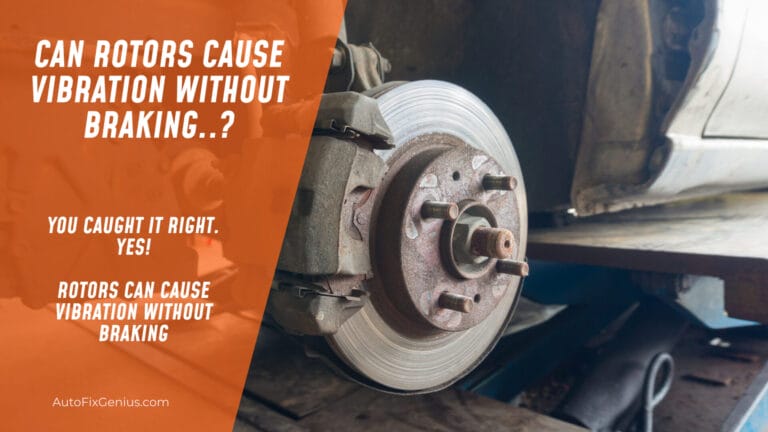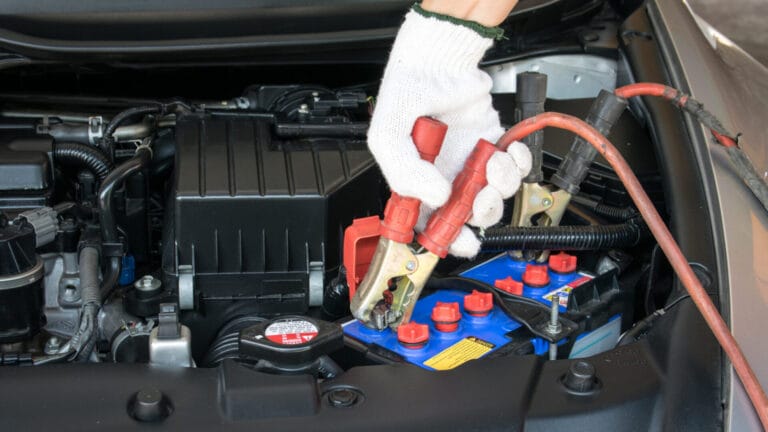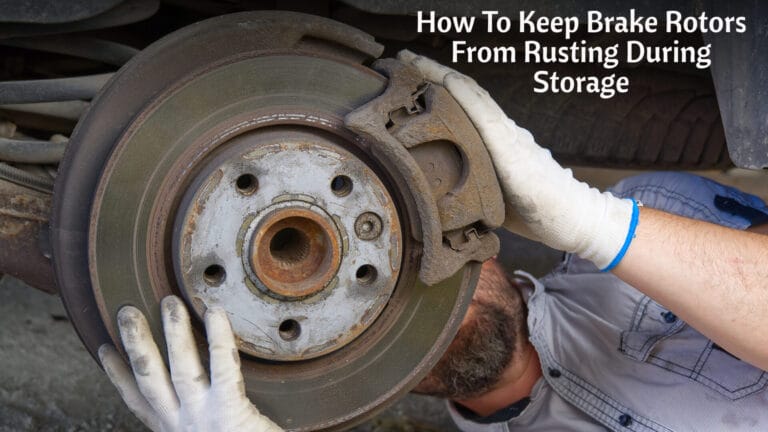Common Car Electrical Problems And Their Solutions
Many car accidents across the country happen because of electrical problems in the victims’ cars. For example, on March 6, 2024, an accident occurred because the driver could not brake due to electric faults. Also, in 2019, a car crashed into a tree because its headlights were not working.
So, what are common car electrical problems and their solutions? The most common electrical problems that can occur in a vehicle include:

- Battery failure.
- Damaged spark plugs.
- Malfunctioning starter motor.
- Broken headlights.
- Faulty crankshaft position sensor.
In this article, we will discuss these common car electrical problems and their solutions. So, let’s get started!
Common Car Electrical Problems And Their Solutions: A Detailed Discussion
Any issues you encounter with the battery, fuse, switches, wiring, and electrical devices in your car are considered electrical problems. Read the information we have provided below to learn about the most common electrical problems you might face while operating your car.
Your Car’s Battery Has Failed
According to Forbes, about 6.1% of car owners need to replace their car’s battery after three years of use. If you have noticed your car’s battery is not working efficiently, it might be because of these reasons:
- Your car’s battery is not fully charging.
- You often keep the key fob inside the car. Thus, your car’s battery runs out of charge quickly.
- The battery plates are corroded.
- A short circuit has occurred inside the battery.
Solution
You should replace your car’s battery in the following situations:
- You have been using the same battery for more than five years.
- It doesn’t recharge properly.
However, you should follow these steps to recharge a fairly new battery:
- Step 1: Use a clean cloth or soft-bristled brush to clean the dirt around your battery terminals.
- Step 2: Take a screwdriver and open the battery cover and cell caps.
- Step 3: Now, check the water levels inside your car’s battery.
- Step 4: If the water level is below 8mm inside battery plates, you need to add distilled water to all battery cells.

- Step 5: Take a charger with high current and boost capacity, like the one in this picture.

- Step 6: Connect the black wire and the red wire to the negative and positive terminals on your car’s battery.
- Step 7: Switch on the charger and keep the voltage around 12V.
- Step 8: Charge the battery for 15 minutes.
- Step 9: Take a torchlight and check inside the battery cells to make sure the water is bubbling.
- Step 10: Turn the charger off for 45 minutes.
- Step 11: Restart the charger and charge the battery in 15-minute intervals at least five times.
- Step 12: Then, turn the charger on at a low rate and let it recharge continuously for ten hours.
- Step 13: After 10 hours, turn off the charger and reinstall the battery’s cell caps and cover.
For more details, you can watch this YouTube video.
The Spark Plugs In Your Vehicle Is Damaged
Spark plugs are electrical devices that create a small spark of electricity that triggers the fuel and air mixture in each cylinder of your car’s engine. Thus, spark plugs help to generate the power that is needed to start your car’s engine.

Usually, spark plugs are often exposed to a high pressure of 150 bar and a voltage of 40,000. As a result, over time, spark plugs in your car can develop various faults like:
- Your car’s spark plug might get covered in gasoline, tar, or soot.
- It can blister due to overheating.
- The electrode insulator may crack.
- The gap between the spark plugs can become enlarged.
- The thread of the spark plug might break off.

Solution
If the spark plugs in your car are not functioning properly, you should remove the old ones and install new spark plugs.
- Step 1: Open the hood of your vehicle.
- Step 2: Disconnect the black wires connected to your car’s spark plug.
- Step 3: Check the condition of the spark plug to ensure it’s not covered in dirt or soot. Otherwise, these dirt particles will fall into your car’s engine cylinders.
- Step 4: Use a magnetic socket and socket wrench to remove the defective spark plug from your car.
- Step 5: Now, purchase a new spark plug that has a shiny appearance, zinc shell plating, and the same plug gap as the old one.
- Step 6: Take a torque wrench and install the new spark plug on your car’s cylinder head.
- Step 7: Lastly, apply a small amount of dielectric grease inside the plug wire before attaching it to the new spark plug.
Watch the YouTube video we have provided here to gain more information on this process.
Your Car’s Starter Motor Is Malfunctioning
Most cars with an internal combustion engine have a part called the starter motor near the engine’s flywheel.

Your car’s starter motor uses electricity from the battery to turn the engine’s crankshaft. So, this motor turns electrical energy from the battery into mechanical energy that helps to start your car.
But, your car’s starter motor might start malfunctioning due to these reasons:
- The cables attached to the motor are faulty.
- The starter relay fuse inside the fuse box has blown.
- Your mechanic did not install the motor properly. Thus, the teeth of the starter pinion and the flywheel ring gear got damaged.
- You accidentally pressed the starter motor switch while the engine was already running.
Solution
If you think your car’s starter motor is not working, take your car to a mechanic. They will figure out why it is not working and install a new one for you. You might have to pay around $300 to $800 to fix your car’s starter motor.
Your Car’s Headlights Stopped Working
Another common electrical problem you might encounter while driving is when the headlights in your vehicle stop working. Cars usually have different types of headlights, like:
- Halogen headlights.
- LED headlights.
- High Intensity Discharge headlights.
- Laser headlights.
The main function of these headlights includes:
- Allowing you to see the road, pedestrians, or animals clearly at night or in bad weather conditions.
- Helping you judge the width of the road.
- Making your car visible to other drivers.

Sometimes, the headlights in your car might fail to light up. This can happen because:
- Your car’s engine has died.
- The wires connected to the headlights got disconnected.
- The bulb has worn out.
- The lenses attached to the headlights of your car have accumulated dirt.
Solution
Researchers found in a study that 60% of pedestrian accidents occur at night due to non-functional headlights in automobiles. So, if your car’s headlights have stopped working, you should get them replaced quickly.
Follow the steps we have given here to attach new headlights to your car:
- Step 1: Buy new headlights that have the same type of light as the ones you had before. You can get fined if you use the wrong type of headlights.
- Step 2: Use pliers to grab and remove the three anchor clips attached to the three studs on the headlight.
- Step 3: Carefully pull out the old headlight.
- Step 4: Now, gently wiggle out the light bulb and the light bulb holder that’s connected to the headlight.

- Step 5: Attach the light bulb to the new headlight.
- Step 6: Align the studs on the new headlight with their corresponding holes.
- Step 7: Gently push the new headlights in.
- Step 8: Lastly, attach the anchor clips on the studs to lock the headlight in place.
For a visual representation of this process, you can watch this YouTube video.
Your Car Has A Faulty Crankshaft Position Sensor
The crankshaft position sensor in your car contains a magnet and a coil of wire. This coil of wire produces a changing amount of voltage as the magnet moves past the coil.
This, in turn, creates an electrical signal that changes based on the position and speed of the crankshaft. The sensor sends an electrical signal to your car’s ECM. The ECM uses this information to figure out where the crankshaft is and inject fuel accurately into the engine’s cylinders.
Thus, if your car’s crankshaft position sensor fails to operate it will not be able to carry out this procedure. Plus, it will create the following issues:
- Your car’s engine randomly turns off while you are driving.
- Your car’s engine cranks for longer than usual before turning on.
- A study found that a faulty crankshaft position sensor can make your car’s engine lose 50% of its power.

Solution
The crankshaft position sensor in your car is a very sensitive electrical part that needs gentle and professional handling when trying to repair it. So, if you are not an expert at fixing car components, you shouldn’t try to fix it on your own.
We advise you to take your car to a mechanic to repair a faulty crankshaft sensor. It will cost you around $400 to diagnose and replace a damaged crankshaft position sensor.
FAQs
If you want to learn more about common car electrical problems and their solutions, read the FAQs we have provided here.
Why are my car’s power windows not working?
Power windows in your car might not work properly due to various technical and electrical issues. For example, if the motor responsible for the operation of the power windows is damaged or if the regulator is broken, the windows will not work.
How can I prevent electrical problems in my car?
You should drive carefully without putting too much load on your car’s engine, wiring, and electrical parts. Also, take your car to a mechanic every month to check your car’s cables, fuses, regulators, and electrical components. If the mechanic finds anything that needs fixing, do it promptly.
Can defective ground wire cause electrical problems in cars?
The ground wire in your car completes the electrical circuit by creating a path for the current to return to your car’s battery. If it gets damaged, it can cause electrical issues. For example, it might prevent your car’s battery from charging fully or make the headlights dim.
Is a damaged alternator in a car considered an electrical problem?
If your car has a damaged alternator, it is considered an electrical problem. This is because it can cause various electrical issues and affect how fast your car’s battery charges. For instance, a bad alternator can transfer too much electricity through its wires. This, in turn, can cause overheating and engine misfires.
Final Words
Overall, your car is made up of sensitive electrical components, complex electrical circuits, and fuses. Over time, due to exposure to dirt, extreme working conditions, heat, and load, the electrical components, cables, and fuses in your vehicle can become faulty.
This, in turn, can cause various issues like loss of power, component failure, dim headlights, brake failure, and engine misfires. So, if you notice any electrical problems in your car, you should get the issue fixed swiftly.






